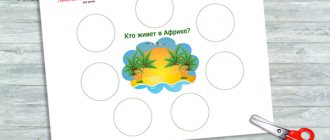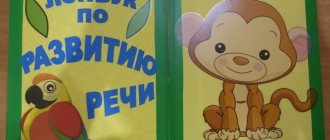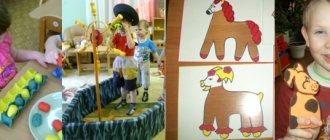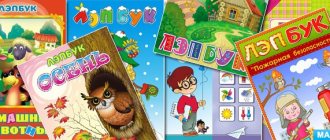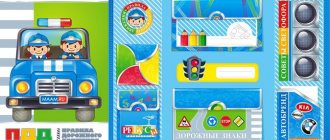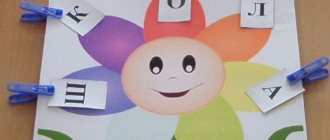Tangram. History of origin.
This famous puzzle comes from China. According to legend, it was invented by the teachers of the emperor’s son - a mathematician, artist and philosopher. With the help of an exciting game, they taught the lazy heir calculations and combinatorial thinking. They taught us to comprehend the beauty of images and to understand the complex world through simple figures. The puzzle is a square of seven geometric shapes. By moving and arranging the figures, you can come up with more than 6 million compositions. In China it is called “chi-chao-tu”. Translated as “seven planks of skill” or “pattern of seven smart parts.” In Europe, tangrams were made from expensive wood and ivory. Many historical celebrities were fond of it, such as Napoleon Bonaparte, Thomas Hill, Lewis Carroll.
Before the advent of computers and various electronic games, tangram was popular along with chess and dominoes. Currently, tangram is more often used in children's educational institutions for the development of children.
Didactic game “Finish the row”
Elena Gareeva
Didactic game “Finish the row”
Didactic manual on mathematics for preschool children.
The formation of cognitive interest in preschoolers is one of the most important tasks in the development of a child. The formation of cognitive interest in preschool children is based on the use of playful, entertaining material. Playful, entertaining material is a good means of developing children’s interest in the subject, the desire to show mental stress, and focus attention on the problem. , didactic games are most used .
To create the game “ Finish the Row ” I used colored and white cardboard. I cut out geometric shapes from colored cardboard. I divided a sheet of white cardboard into 2 parts and drew lines on each part. I pasted geometric shapes onto the line.
Purpose of the game: development of logical thinking, attention, visual concentration.
— development of the ability to see a pattern, pattern;
— consolidation of the ability to distinguish geometric shapes;
- developing the ability to independently complete tasks;
- development of fine motor skills of the fingers.
Cards vary in degree of complexity: curved paths, the use of a different number of figures that differ from each other in shape, color and size.
Rules of the game: the child must complete the row according to the proposed pattern.
"Game of Moods" Didactic game for preschool children Title: “Mood Game” Age: children 4-7 years old Purpose: development of communication skills and the emotional-volitional sphere of children Age: children. Didactic game Didactic game "Bouquet". Description: a bouquet of flowers standing in a vase is laid out on a flannelgraph. Flowers red, blue, yellow, purple,. Didactic game In the process of getting acquainted with Nizhny Novgorod, the need arose to reinforce the material in an interesting and exciting way.
Didactic game Didactic games contribute to the development of all aspects of the human personality. If they are conducted lively, children react to them with great interest.
Didactic educational game “What different fish” for children from 3 to 7 years old I would like to present you with a version of my game “What different fish” You can start playing this game with children of three years old and as they get older.
Tangram game for preschoolers: goals and objectives
Tangram develops many abilities. One of the goals of the tangram is to teach children to independently find solutions. By putting the figures in one order or another, preschoolers try different options, choosing the optimal composition in accordance with the given rules. The magic square, like other logical tasks and puzzles, perfectly activates mental activity and develops character.
Tasks:
- To develop in children memory, attention, fine motor skills, various types of thinking (logical, spatial, imaginative, constructive), intelligence, imagination,
- To develop children's perception of color and shape,
- Teach to follow instructions and play according to given rules,
- To develop perseverance and patience as necessary qualities for the future school period,
- To instill in children responsibility and a serious attitude towards completing the assigned task.
Progress of the game:
The game can be used both in group and independent gaming activities.
Children are given cards; they need to complete the row with geometric shapes, repeating the chain of shapes one or more times. Cards differ from each other in degree of difficulty. We start with a simple task and gradually make it more difficult.
I offer several game options:
Game option: repeat the pattern according to the sample
Game option II: come up with your own pattern
Game option III: post a picture of geometric shapes of your choice
Didactic game for middle preschool children “Multi-colored stars” In April, the whole country, including us, celebrates the holiday, Cosmonautics Day. The children and I had a lot of different conversations on the topics “Space. Didactic game made of felt for middle preschool age “School of the Seven Dwarfs” Greetings to the guests of the page: friends and colleagues! Today I want to share with you some didactic material that was inspired by the publication. Didactic game in mathematics for middle preschool age “Geometric rug” I try to conduct mathematics classes with children in a variety of forms, using a variety of methods, techniques, didactic games and exercises.
Source
At what age do they play tangram?
There are many opinions, successful and unsuccessful experiences of teaching geometric puzzles to children of different ages. Often, preschoolers 2.5 years old do not yet understand the rules of the game. Children 3-4 years old are quite capable of moving and folding figures, but they do not always have enough perseverance. As a rule, it ends with 2-3 compositions under the guidance of a teacher or mother, then a switch of attention and types of activities is required. But the most diligent children of 3.5 - 4 years old can already come up with images themselves or assemble them according to existing patterns. And if you interest them not just in composing figures, but in making a multi-colored tangram, and organically interweave a fairy tale, a narrative with elements of adventure and vivid images during the lesson, then preschoolers can independently come up with unexpected solutions to the puzzle.
At what age does a child start playing tangram? Each teacher or parent decides for himself. Children may master it very early, or may not show interest even in older preschool age. The child should be ready for puzzles of this kind.
The teacher should take into account that if the activity involves making a tangram with their own hands, then the children must be able to work with scissors.
Didactic game for middle preschool age “Finish the row”
Svetlana Shabashova
Didactic game for middle preschool age “Finish the row”
Today I bring to your attention a new game for middle preschool “ Finish the Row ”
.
This game will help children better understand the names of geometric shapes and consolidate the names of colors.
Purpose of the game: to promote the development of the ability to distinguish geometric shapes (circle, square, triangle, oval)
; development of logical thinking, memory, attention
Material: Cards depicting paths of various configurations, each path has an example of constructing a chain, a set of geometric shapes.
Tangram: a fairy tale with tasks
The most interesting option for a lesson with a magic square for children would be an activity in the form of a fairy tale. You can choose any fairy tale in accordance with the age interests of preschoolers.
Take, for example, the cartoon “The Adventures of Luntik and His Friends.” All of his characters are well known to preschoolers. You can invite them to collect the image of the main character - Luntik, Baba Kapa, General Sher, Kuzya, Bee, Vupsen and Pupsen, the toad Klava and others.
As a rule, all children remember the beginning of the fairy tale: “Once upon a time, a baby was born on the Moon...”. Further, in accordance with the plot of the selected series, the heroes can meet in a flower meadow (collect a flower), play a ball (collect a ball), sit at the table and drink tea with pie (collect a table, then dishes, pie...).
In accordance with the age characteristics and interests of preschoolers, the teacher can complicate the lesson by introducing a competitive element: boys collect male characters - Luntik, Kuzya, the spider Shnyuk, and girls - female characters - Mila, Baba Kapa, butterflies, toad Klava, leech, etc. .
You can also watch one of your favorite cartoon series with the kids and together choose images of characters and objects to compose them from tangram figures.
When offering tangram tasks to children, it is important for the teacher to remind preschoolers to follow the rules of the game.
The tangram game perfectly develops intelligence, imagination, logical thinking, and teaches the basics of geometry. The tangram game is undoubtedly useful for preschoolers.
Buy on Aliexpress
Buy on Aliexpress
Buy on Aliexpress
If you found the information on the site useful, please share it on social networks:
Progress of the lesson:
The teacher places a card in front of the child and suggests using logical thinking to continue the series with geometric shapes.
In the future, the game can be complicated by adding more complex cards and additional geometric shapes.
The game “Smart Cards” for classes with children of the middle group on the formation of elementary mathematical concepts. The formation of elementary mathematical concepts is one of the most important subjects in preparing children for the school curriculum. Demonstration material for classes on the formation of elementary mathematical concepts Today I would like to show my demonstration material, which I use in classes on the formation of elementary mathematical concepts.Geometric figures. Didactic game for preschoolers on the formation of mathematical concepts “Guess what’s wrong?” Didactic game for preschoolers on the formation of mathematical concepts: “Guess what’s wrong?” Goal: Continue teaching children names.
Didactic game for the formation of elementary mathematical concepts in the junior group “Matryoshka” Didactic game for the formation of elementary mathematical concepts in the junior group. “Matryoshka” I would like to offer to your attention. Didactic game for the development of elementary mathematical concepts for children of primary preschool age Didactic game with colored covers “Hen with Chicks” for children of primary preschool age Developer: Afanasyeva M. V. teacher. Didactic game “Funny Clothespins” for the development of fine motor skills, attention and basic mathematical concepts. Dear colleagues! Today I want to show you my game “Funny Clothespins”. This game is designed for the development of small children.
Source

